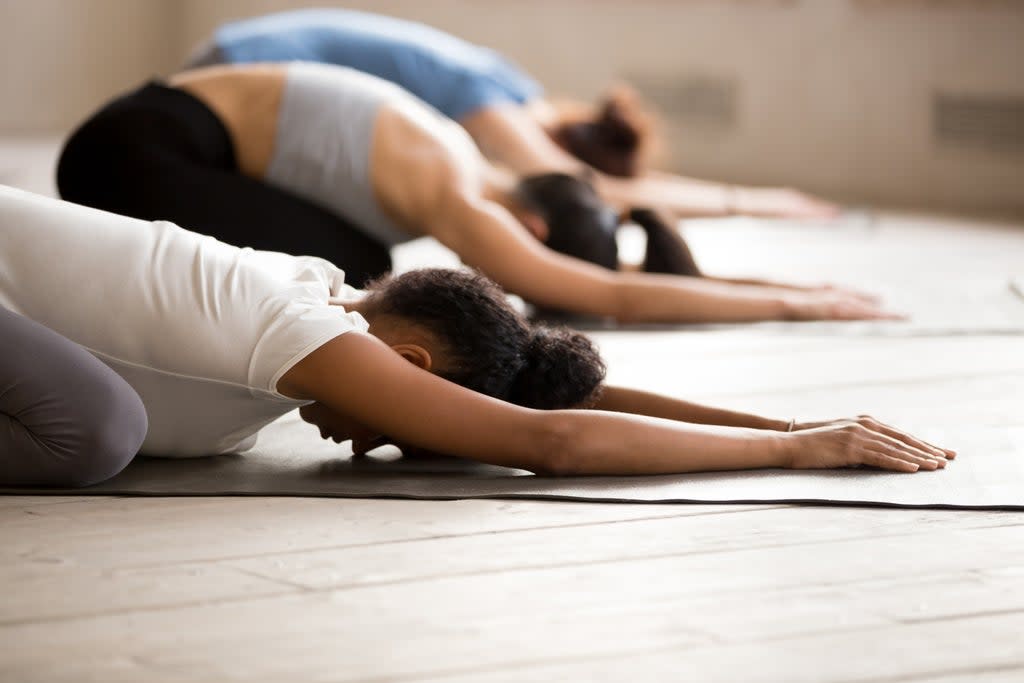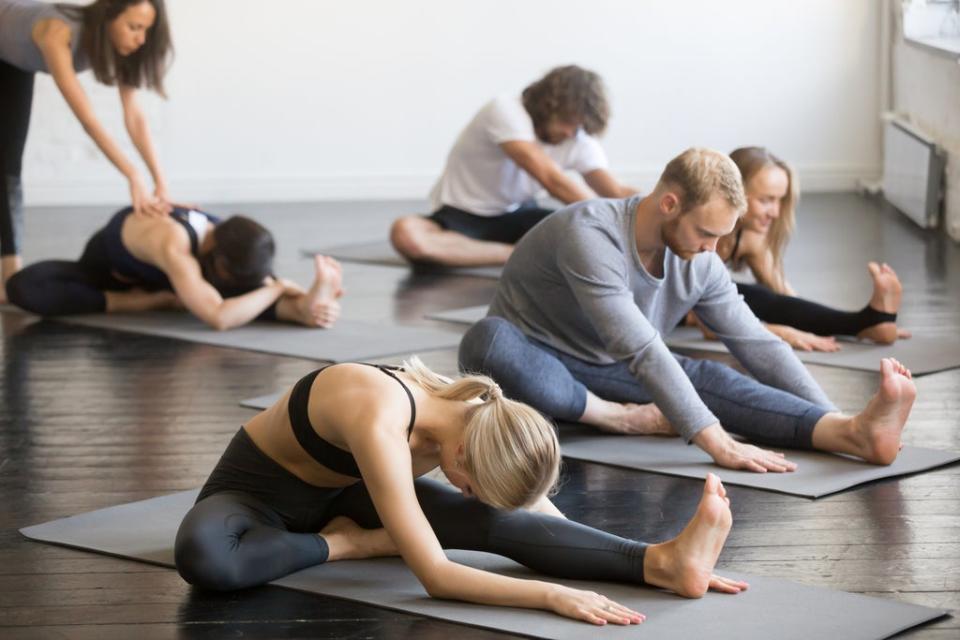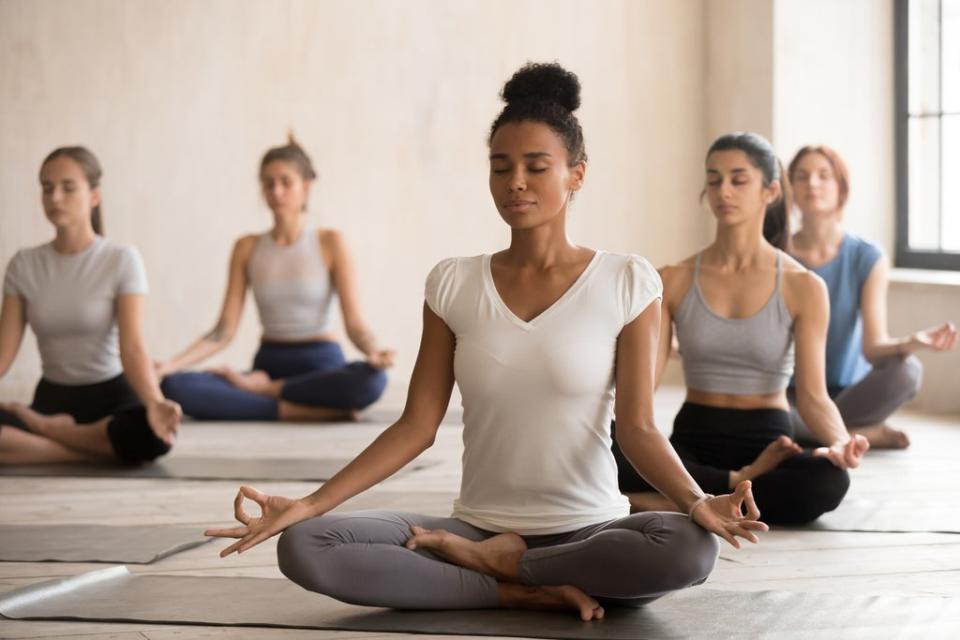This is why crying during yoga is OK

The first time Lisa Jakub started to cry during yoga class, she was embarrassed. “Crying in public is not something I love doing. What’s wrong with me? I need to get myself together,” she recalls. Then her “wonderful” instructors helped her understand that crying is a perfectly natural response and that the yoga studio should be safe and comfortable for processing feelings, including the really difficult ones.
When Lisa underwent yoga teacher training, it included lessons on how to empower students to work through emotions. Now, when someone starts to cry during a class, she thinks: “Good, the yoga is working”. Instead of drawing attention to the tear-shedder, Lisa – who frequently works with combat veterans – makes eye contact and offers a meaningful nod. She then checks in with them after class.
Other yoga instructors say that they, too, often witness students weeping on the mat.
Loren Fishman, an expert in integrative medicine who is a physician, medical researcher and yogi (he studied for three years in India), says: “I saw one person who just had tears running down her cheek. They break down and cry for maybe a minute and then it’s over”.
While experts we talked to agree that crying during yoga is perfectly normal, they offer different theories about what prompts the behaviour.
Dr Fishman, who is the medical director of Manhattan Physical Medicine and Rehabilitation in New York and author of numerous books about yoga, says that it offers, “freedom from a number of emotional restraints”. The stretch receptors in the muscles connect directly to relaxation centres in the brain, he says. “Profound, even momentary relaxation can release very strong emotions that are usually inaccessible.”
People who cry during physical activity are deeply immersed in the moment – and, for that fleeting period of time, not obsessing about the future or regurgitating the past
He himself has experienced bouts of tears while stretching and he’s also found himself “laughing unexpectedly” at the physical release. Crying during yoga, he believes, isn’t caused by joy or pain, but by “tremendous relief”.
Adam Gallenberg, a sports psychologist, points out that people often turn to exercise when they are feeling stressed, “so, if they’re using it as a way to cope with all the stressors in their lives, they’re very likely to have their mind go to these things while they’re exercising, and really experience the emotional reaction tied to those stressors”.
Mr Gallenberg believes that, “physical vulnerability leads to emotional vulnerability”, and that the more we suppress certain emotions – such as shame, frustration or inferiority – the more likely they are to surface when we’re in a physically vulnerable state. “In yoga, we put our body in certain poses that we might refrain from doing in our daily lives,” he says, “like opening up our chest or standing up tall”, or stretching in a specific way (hip-opening poses are anecdotally known to trigger crying, perhaps because of all the tension stored in our hip muscles).
Oriana Aragon, a social psychologist who studies emotional expressions at Clemson University, South Carolina, suspects that people who cry during physical activity are deeply immersed in the moment and, for that fleeting period of time, not obsessing about the future or regurgitating the past.
“They’re consuming the moment, and everything else washes away,” she says. It’s “very primal”. Sometimes, people might be overwhelmed by a feeling of awe or achievement, such as when they’ve just completed a marathon. Aragon remembers crying after finishing a half-marathon and feeling proud of herself. “It could be release, it could be achievement, but it’s definitely about stopping in that moment,” she says.

So, what should you do if tears do start to fall while you’re on your mat? Gallenberg’s advice is to go with it. “It’s really uncomfortable and we grow up in a society where we’re told not to feel angry, or to hide our tears,” he says. “But often, those tears are not a bad thing. If anything, it can just be a reminder that we’re all human beings and it’s OK to have our body show what we’ve been internalising.”
If you’d actually like to experience an emotional release while exercising, there are also options other than yoga. For example, US workout The Class (the ambiguous name is intentional so you can make of it what you want) is one that, “guides you to strengthen your body and notice your mind in order to restore balance”, says Natalie Kuhn, vice president of programming and a founding teacher.
The practice is mat-based and music-driven. “What that means is we repeat one move, one song, to create sensation in the body,” Kuhn says – lots of squats and jumping jacks, for example, “and then once you’re in that physicality and that athleticism, the teacher asks you to bring your attention inside, observe your thoughts, observe your feelings, observe what experience you’re having as you begin to meet that intensity and challenge”.

Kuhn likes to think of it as challenging your body to understand your operating system and, as you might have guessed, The Class is famous for evoking tears. “If we’re holding on to a cry, holding on to a laugh, holding on to a bellow, holding on to a feeling or a belief, we’re compressing and limiting our energy,” she says, “and so, when we finally give ourselves the chance to laugh, to cry, to connect, to feel a sense of belonging, that energy is released”.
Working out via virtual reality also may provoke an intense emotional response. If you search social media for the VR app Supernatural – which allows people to, say, go boxing on the moon – you’ll find numerous tear-centric posts. One group member asked: “Has anyone else started crying for literally no reason in the middle of a workout?”, noting she wasn’t, “sad or anything”. Another declared that it was her, “first time ever crying during a workout”, and that she considered the experience one step toward rebuilding “mentally and physically”.
“I hear reactions like that all the time,” says Antonio Harrison, a behaviour scientist and one of the app’s fitness coaches: “People saying that what they thought was sweat dripping wasn’t sweat it was actually tears.”
VR by its very nature encourages people to tap into their deepest emotions, Harrison says. “You’re physically moving, you’ve got these endorphins and hormones rushing, all these feel-good chemicals. You’re in this beautiful environment. You’re seeing yourself smash these targets and move, and then the music comes on.” Cue the tears, “It could be from the flow; it could be joy releasing; or maybe it’s even the first time somebody told you ‘good work’.” (Also, no one is around to see you cry, which is liberating).
Whether a sobbing session occurs during yoga or a virtual reality workout, experts believe it can be a positive development. Leanne Pedante, Supernatural’s head of fitness, says seeing a client have a breakthrough emotional moment involving “really deep emotional work” is part of the reason she loves her job. “The physical stuff is a secondary vehicle,” she says.
© The Washington Post
Read More
8 best yoga mats perfect for using at home or the gym
Author Adele Parks on yoga, walking and why she hasn’t completely cracked switching off
Yoga originated in Nepal, not India, claims Nepal PM
9 best yoga leggings and pants that are comfortable and squat-proof

